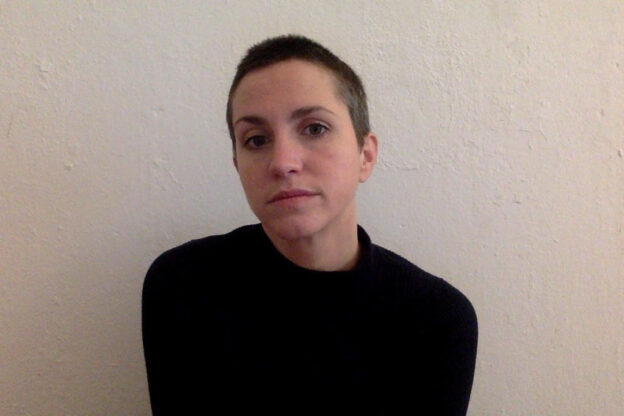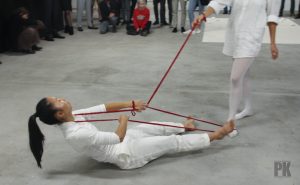“Holistic” describes Tessa Thiesen’s approach to performance art. She has a Masters degree in Choreography and performance and a background in theatre studies, art history, and philosophy. Yet her theory and practices seem to be the product of all these subjects, and more. While focusing intently on the both the physical and theoretical aspects of performing arts, Tessa’s approach to this medium seems to encompass biology, philosophy, psychological aspects, as well as performance art and theatre. The result is a knowledgeable and expressive expert for this PILOTENKUECHE online residency.
Tessa brings it all together
Tessa currently lectures Theatre Studies at the University of Erlangen-Nuremberg. She considers her teaching of this subject to be deeply inspired by performance art. It is important to note that theatre studies is not the student of performance art. Conversely, performance art has much to learn from and be inspired by theatre studies. Theatre and performance art are deeply intertwined. An appreciation of both will only enrich and deepen your understanding of these disciplines.
For Tessa, the relationship between audience and performance is key. She tries to instil in her students an appreciation for the realities of all performance. It is transitory. It cannot exist outside of the moment of the performance. The audience and the performer are locked together in this temporary moment, both contributing to the creation of the performance, that fleeting, transient experience. “You are always part of the work”, is Tessa’s mantra.
intrinsically connected
Tessa built upon these ideals when she discussed them with the PK residents. She discussed the emancipatory potential of performance art. It is always attempting to free itself from the ideals of what art should be, the tyranny of expectation. When approaching performance art from the background of being a visual artist, it is important to note the differences in process. Tessa points out that allowing a spectator or audience to witness the physical creation of the art is rare in material art, but totally necessary in performance art.
Both in performance art and theatre, there is an element of exposing yourself to the audience. Artist, artwork and spectator all share the same intimate space. Tessa highlights the emphasis on communicating atmospheres, rather than narratives or stories. When you have the opportunity to directly share a space with your audience, you have the ability to create something beyond a two-dimensional conventional piece of art.
repeat, repeat, repeat
Tessa builds on these theories of creative methods. She suggests that practice is key to creativity. The development of daily habits and rituals that make creative patterns a regular, instinctive reflex, rather than a single isolated moment. Repetition might sound like the enemy of inspiration, but Tessa disagrees. She suggests that out of repetition, something unexpected can be born. In shifting your focus from the end product, to the method, the act of creation becomes the art itself. Perhaps the key to performance art is learning to not focus upon the “product” but rather the method and practice that goes into creating it, the atmosphere and environment in which it takes place, and the relationship built between artist audience and art.
written by Ben Gosling


